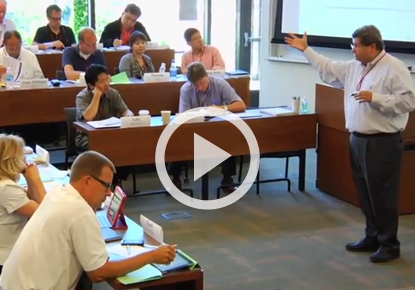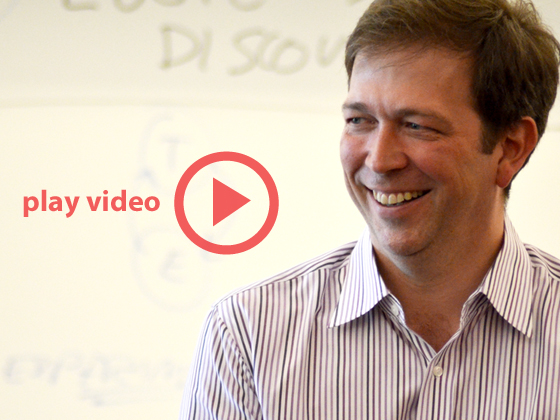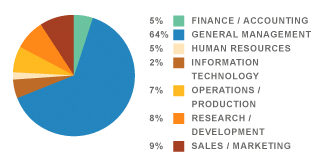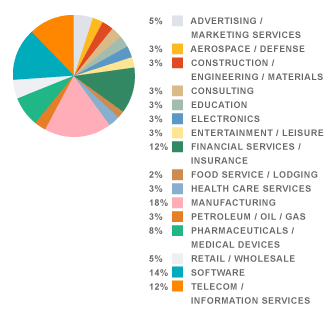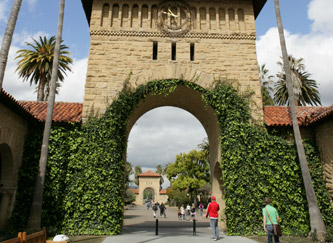UNDERSTANDING COMPETITIVE ADVANTAGE
Many firms are successful in their markets, but have only a limited understanding of the reasons behind success. This lack of understanding can be dangerous: seemingly sensible decisions can turn the firm's fortunes for the worse. More generally, firms with a sustained competitive advantage are ones in which managers throughout the organization have a deep understanding of the firm's key success factors. This session will present a framework for analyzing the firm's basis of competitive advantage, and allow you to consider the implications of different sources of competitive advantage for strategic decision making.
MOTIVATING EMPLOYEES TO WORK HARDER AND SMARTER
In these tough economic times, leaders must find ways to motivate their employees to work harder and smarter. Most managers tend to rely on "carrots" as means of motivation. This session will explore alternative "psychological levers" — tools that truly motivate and inspire employees to perform.
STRATEGY BEYOND MARKETS
Most business school classes focus on firms' interactions with customers, competitors, suppliers, and shareholders in the form of mutually beneficial voluntary exchange transacted in markets. In contrast, these sessions consider firms' strategic interactions with comparably important constituents, organizations, and institutions outside of markets. Strategy beyond markets is a central component of a company's approach to achieving superior overall performance, and it must be integrated with the company's market strategy. Examples of topics to be discussed in these sessions include boycotts, activist pressures, regulation, judicial decisions, and political risk, all of which substantially impact firms' performance and profitability.
LEADERSHIP VIGNETTES
This session will draw on a collection of video cases featuring leaders talking about the toughest challenges they have faced, the decisions they have made, and the lessons they learned from these experiences. You will then discuss how these challenges relate to your own careers and to your development as leaders.
CRISIS MANAGEMENT
What should management do when a crisis focuses the harsh spotlight of public opinion on its organization? Whether it results from a firm's own missteps (think BP) or from strategic activism or media action (think Greenpeace), crisis is increasingly on the agenda for today's executives. This session will explore the skills and organizational structures required to prepare for, and productively manage, a crisis to avoid bringing lasting damage to a firm's reputation.
STRATEGY AND ORGANIZATIONAL DESIGN: TRANSLATING STRATEGY INTO ACTION
This session will examine the role of organizational design in executing a company's strategy. The group will begin by identifying JetBlue's strategy and then discuss how the company's organizational design supports this strategy. The case of JetBlue Airways will be used to evaluate the way a company culture is built and reinforced and how it can support the execution of the company's strategy.
COACHING TALENT
Advancing to executive ranks typically means relying less on one’s own knowledge or technical skill and more on being effective at developing others; yet most leaders are relatively unprepared to do this. Coaching is among the most powerful and yet undeveloped/underutilized skills at a leader’s disposal. We will introduce you to coaching fundamentals (listening, inquiry, reframing and setting up experiments) as well as provide an opportunity to practice and further develop these competencies.
COMMUNICATING EFFECTIVELY
As a leader, you spend the majority of your time communicating with others—team members, subordinates, and clients. You probably don’t spend much time thinking about the way you communicate, nor are you likely, in a business setting, to get honest feedback on the way you communicate. Yet the quality of your communication largely determines your effectiveness. This session will help you appreciate the nature and complexity of a specific form of communication—persuasion—and provide guidelines for boosting the strength of a persuasive message. We will draw on specific examples from other organizations to highlight our takeaways.



